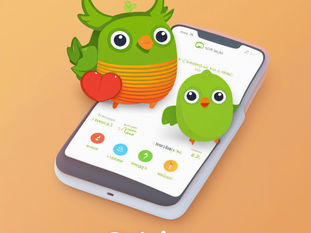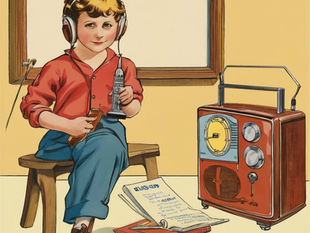Tech 4 Ells
Translation Pen, Is it Right for Me?
Sep 15, 2024
5 min read
0
20
0
The start of this school year has presented challenges for myself and a few of my classroom teachers. We have welcomed several new students who don't speak English or speak very little. I've been trying to give the classroom teachers suggestions on how to support our new students, but they are struggling to adapt their lessons to meet the needs of the non-English-speaking students. Communication between students and teachers is a challenge in some classes. The teachers are getting frustrated and are having difficulty engaging the students in their lessons.

I am working to find ways to help bridge the gap between the teachers and the students. I have explored different technologies that might help both parties, and I am testing some options that I think may be beneficial. While I have tried using Google Translate and had some success with it, I've found that it is not always the most effective or reliable way to communicate with students. I'm searching for a technology that can do more than translate written or spoken text. I'm looking for something that can read text, translate spoken and written language, and have features like a dictionary. After doing some research, I've decided to try a translation pen.
There are numerous brands of translation pens available in the market, and most offer similar features.
Here are some of the features that you can find on a translation pen:
Text Scanning
Optical Character Recognition (OCR): Translation pens typically use OCR technology to scan and recognize text from printed material. This allows users to scan a word or a passage and receive an immediate translation.
Versatility: Many pens can handle various types of text, including books, worksheets, and signs, making them versatile tools in diverse learning environments.
Instant Translation
Real-Time Processing: Translation pens provide near-instant translations of scanned text, allowing students to quickly understand and engage with new material.
Multiple Languages: Most translation pens support a wide range of languages, making them suitable for multilingual classrooms.
Audio Pronunciation
Text-to-Speech: In addition to translating text, many pens offer audio pronunciation of words and phrases in both the source and target languages. This feature helps students with proper pronunciation and auditory learning.
Phonetic Assistance: Some pens include phonetic transcriptions to assist with understanding and pronouncing difficult words.
Dictionary and Thesaurus Functions
Built-in Dictionaries: Many translation pens come with integrated dictionaries and thesauruses, providing definitions, synonyms, and contextual usage of words.
Customizable: Some models allow users to add custom vocabulary or specialized terms relevant to specific subjects or curricula.
Language Learning Features
Language Exercises: Certain translation pens include language learning exercises and games designed to reinforce vocabulary and grammar skills.
Quiz and Review Modes: Interactive features, such as quizzes and review modes, can aid in tracking progress and reinforcing learning.
Text-to-Text and Voice-to-Voice Translation
Text-to-Text: Users can often input text directly into the pen for translation, offering flexibility beyond scanning printed material.
Voice-to-Voice: Some advanced models have the capability to translate spoken language, which can be useful in conversational practice or real-time communication.
Digital Storage and Connectivity
Memory Storage: Translation pens often come with internal memory to store frequently used words or phrases, as well as historical translations.
Connectivity: Many models can connect to computers or mobile devices via USB or Bluetooth, allowing for updates, additional language packs, or syncing of data.
User-Friendly Interface
Touchscreen Displays: Some translation pens feature touchscreens that make navigation and interaction easier for students.
Ergonomic Design: Designed with ease of use in mind, translation pens are typically lightweight and ergonomically shaped to fit comfortably in a child’s hand.
Educational Resources
Learning Materials: Some translation pens come with access to supplementary educational resources, such as language learning apps, online dictionaries, or interactive exercises.
Teacher’s Tools: Certain models provide features specifically for educators, such as tools for creating vocabulary lists or tracking student progress.
Durability and Portability
Robust Build: Translation pens are often built to withstand the rigors of classroom use, with durable construction to handle drops and rough handling.
Portable Design: Their compact size and lightweight nature make them easy to carry around, fitting well into a student’s backpack or a teacher’s desk.
Is the translation pen worth getting?
Here are some Pro and Cons
Pros
1. Immediate Translation Support
One advantage of translation pens is their ability to provide immediate translation. For young learners who struggle with English or another language, these pens can offer quick translations, helping students understand lessons and instructions.
2. Encourages Independence
Translation pens can provide independence for students. Instead of relying on a teacher, students can use the pen to translate text on their own. This can increase confidence and encourage a more proactive approach to learning.
3. Reduces Language Barriers
By providing instant translations, these pens can help reduce language barriers in the classroom. This is particularly useful in subjects where understanding the text is crucial, such as reading assignments or math problems that include written instructions.
4. Enhances Learning of Vocabulary
Translation pens often include features that allow students to hear the pronunciation of words in both languages. This can aid in vocabulary acquisition and pronunciation, which is particularly beneficial for young learners who are still developing their language skills.
5. Supports Diverse Learning Needs
With classrooms becoming increasingly multicultural, translation pens can support students from various backgrounds. They can be useful in schools with English Language Learners.
Cons
1. Over-Reliance on Technology
One potential downside is that students might become overly reliant on the translation pen. Relying on the pen for translations might limit opportunities for students to practice and develop their language skills through more immersive and interactive methods.
2. Accuracy and Context Issues
Translation pens are not one hundred percent accurate. They might struggle with context-specific phrases, idiomatic expressions, or specialized vocabulary. Misinterpretations can occur, which could lead to confusion or misunderstanding of the material.
3. Cost and Maintenance
Translation pens can be expensive, and maintaining them can add to the financial burden of schools. Additionally, they require regular updates and battery replacements, which could be a logistical challenge.
4. Distraction Potential
While translation pens can be useful, they also have the potential to distract students. If not used appropriately, students might focus more on the technology rather than engaging with the actual content. This could detract from the learning experience if the tool is misused.
5. Equity Concerns
There may be issues related to equity, especially in schools with limited resources. Ensuring that all students have access to translation pens or similar tools might be challenging, and disparities could arise if some students have access while others do not.
Conclusion
After carefully weighing the pros and cons and thoroughly evaluating the features, I believe a translation pen may align with my needs. I prefer not to make a substantial investment in technology at this time. I chose a more budget-friendly translation pen with the necessary features. If it performs as effectively as I anticipate, I may contemplate upgrading to a higher-quality pen later. I plan to experiment with it in the following weeks and then try it with my students.





